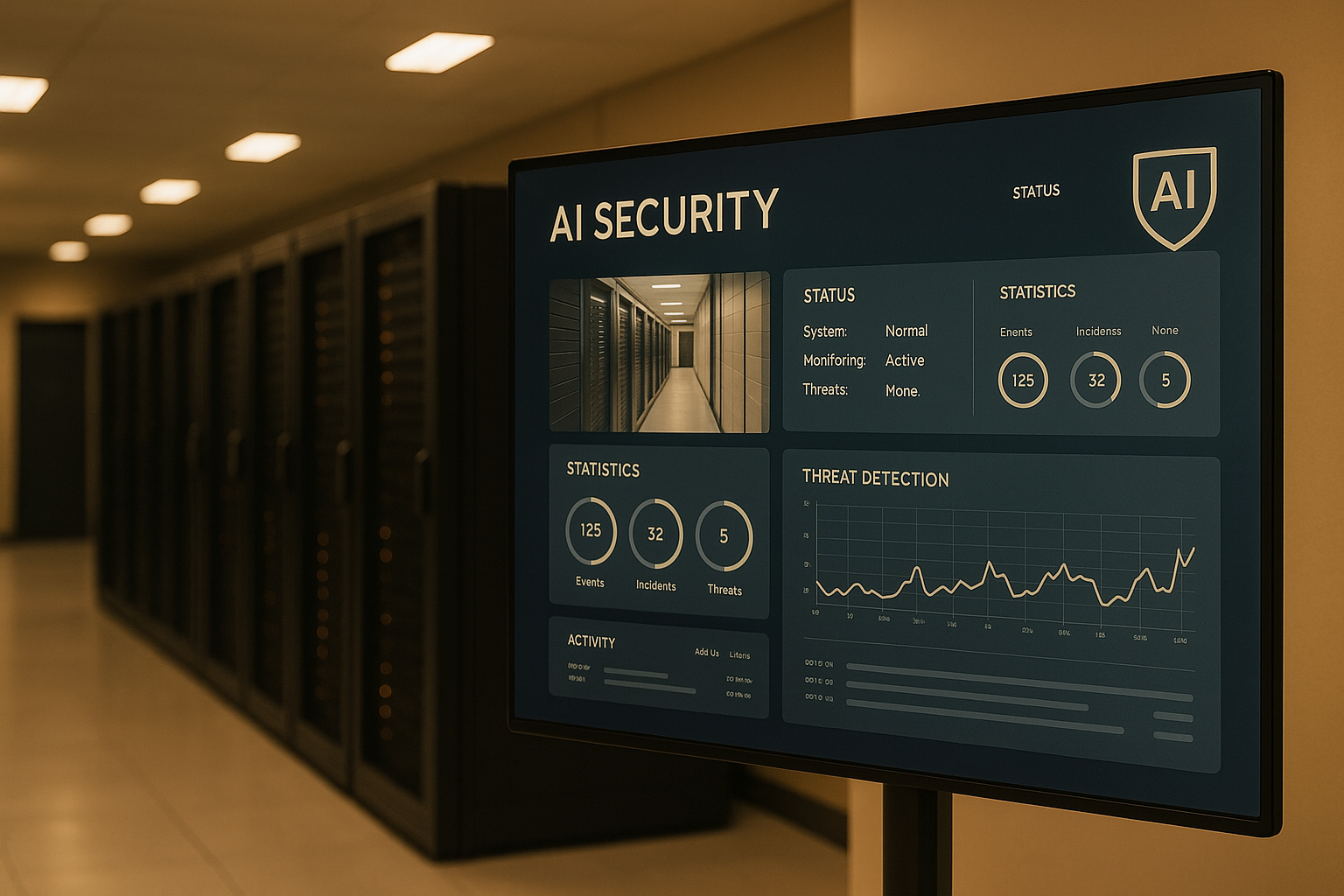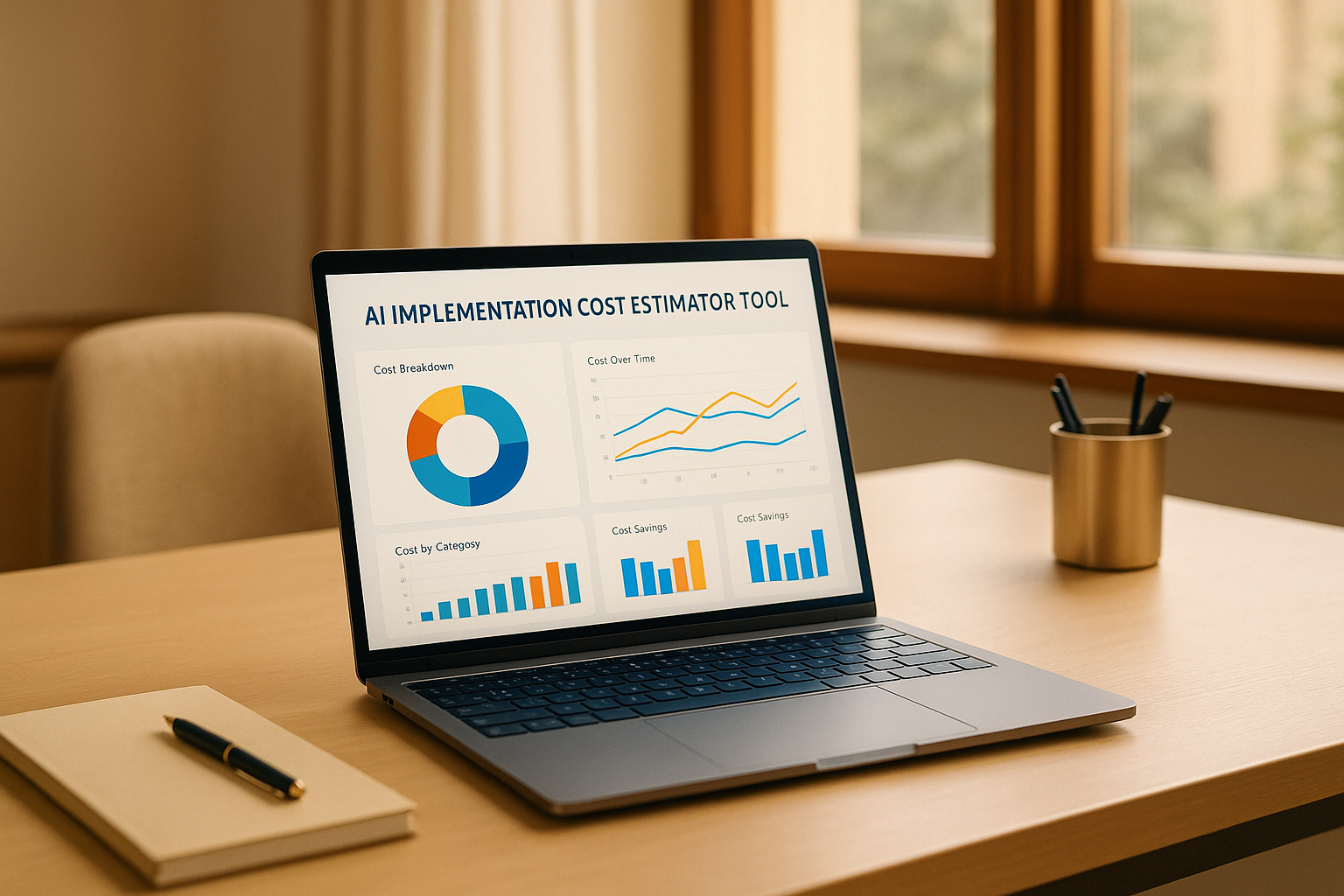
Building trust in AI security systems is critical for their successful adoption, especially in sensitive areas like healthcare, finance, and law enforcement. Public skepticism remains high due to concerns about privacy, bias, and accountability. To address this, organizations need to focus on five key areas:
Effective AI security requires strong governance and clear accountability across different functions. Organizations that establish cross-functional AI governance teams see AI deployment timelines improve by 40% and experience 60% fewer compliance issues after deployment compared to those without structured governance systems. Despite this, only 23% of organizations feel fully equipped to handle AI-related risks. Meanwhile, 80% of business leaders identify challenges like AI explainability, ethics, bias, and trust as major barriers to adopting generative AI. A well-defined governance framework is the starting point for achieving stakeholder alignment.
Identifying the right stakeholders involves more than just engaging IT and security teams. AI security impacts various areas within an organization and even extends to societal concerns, meaning input from a wide range of voices is necessary.
Key internal stakeholders include executives who set strategic priorities, IT leaders who bring technical expertise, legal teams who ensure regulatory compliance, and compliance officers who uphold internal standards. Additionally, external stakeholders - such as civil liberties advocates, community representatives, and regulatory authorities - play a critical role in shaping AI security decisions. Indirect stakeholders, who might be affected by these decisions, should also be considered. A well-rounded stakeholder map should address economic, social, and environmental factors. Engaging these groups early in the process not only reduces the risk of conflict but also builds trust from the outset.
An AI Governance Charter acts as the backbone of accountability and collaboration. This document outlines the mission, scope, roles, responsibilities, and authority within the organization’s AI governance structure. It should establish guiding principles like clear authority, transparency, ethical alignment, operational guidance, and strategic boundaries to direct oversight and decision-making.
Key elements of the charter include ethical guidelines reflecting corporate values and societal expectations, adaptable regulatory frameworks, accountability mechanisms with clear audit trails, transparency standards that clarify system operations, and risk management processes addressing technical, operational, reputational, and ethical risks. Organizations should customize these frameworks to fit their specific needs. Defining who has the authority to approve or pause AI security deployments is particularly critical for smooth governance.
Once the charter is in place, regular meetings ensure the team stays aligned and responsive to new challenges.
Ongoing governance relies on consistent review meetings to adapt to the ever-changing landscape of AI security. Data shows that structured stakeholder management improves project success rates by 38%, highlighting the importance of a regular meeting schedule.
Strategic alignment meetings should occur monthly or quarterly, especially during key shifts in strategy. These sessions, typically lasting 90 to 120 minutes, should include executive sponsors, project leaders, and managers to review goals, assess risks, and allocate resources. Operational meetings, on the other hand, focus on tracking KPIs, milestones, and resource distribution.
Organizations can also use Meeting Intensity Planning to adjust the frequency of meetings during different project phases. Cross-functional synchronization meetings, held biweekly or monthly, help departments stay aligned by addressing interdependencies and coordinating resources. To increase efficiency, a mix of communication methods - 30% synchronous (real-time) and 70% asynchronous (pre-recorded or written updates) - is recommended. This approach can reduce administrative workload by 38% and improve the implementation rate of agreed actions by 42%.
These review meetings must evolve continuously to tackle new regulations, emerging threats, and shifting public expectations. This ensures that stakeholder alignment remains strong and trust in AI security systems grows over time.
To build trust in AI security systems, organizations must prioritize safeguarding data, upholding ethical standards, and protecting civil liberties. This involves revising data governance practices to meet evolving privacy expectations while managing the complexities of modern data flows. These measures should go beyond basic governance, embedding privacy and ethical considerations into every aspect of AI development and deployment.
Caitlin Chin‐Rothmann from the Center for Strategic and International Studies highlights a pressing concern:
"AI expands the reach of existing surveillance practices - introducing new capabilities like biometric identification and predictive social media analytics - which could also disproportionately affect the privacy of communities that have historically been subject to enhanced policing based on factors like their zip code, income, race, country of origin, or religion."
Similarly, privacy expert Itir Clarke underscores the growing importance of privacy in business strategy: "Privacy is no longer just a legal issue - it's a key part of business strategy. Companies that ignore this are at risk of fines, reputation damage, and lost trust. But those that lead on privacy can stand out, earn loyalty and innovate with confidence."
Establishing strong data privacy standards means integrating privacy into every stage of the AI lifecycle - from how data is collected to how models are eventually retired. Key principles like data minimization and purpose limitation form the foundation of these standards. Techniques such as differential privacy, federated learning, and synthetic data can further reduce reliance on sensitive information.
The OWASP AI Security and Privacy Guide offers a vivid analogy for handling personal data: "Treat personal data as 'radioactive gold': valuable, but something to minimize, carefully store, carefully handle, limit its usage, limit sharing, and keep track of where it is."
Organizations can also use automated tools for monitoring and assessing privacy risks in real time. Proactive steps like conducting AI-specific assessments and completing Data Protection Impact Assessments (DPIAs) before acquiring or developing AI systems are essential. Additional measures include:
Currently, 19 U.S. states have enacted comprehensive privacy laws, with four states implementing laws specifically addressing AI applications in the private sector. Keeping pace with this shifting regulatory landscape is critical for compliance and accountability.
Ethical review processes ensure that AI systems align with societal values and organizational principles. Microsoft, for example, has embedded safeguards like content filtering, usage caps, and auditability tools into its Azure OpenAI services through collaboration and ethical foresight.
Ethics committees and other oversight mechanisms play a key role in monitoring compliance and guiding decisions. These boards benefit from diverse expertise, including technical specialists, ethicists, legal professionals, and community representatives . Their focus should include areas such as:
As ISO describes it:
"Responsible AI is the practice of developing and using AI systems in a way that benefits society while minimizing the risk of negative consequences."
Decision-making frameworks can help organizations navigate ethical challenges by outlining clear escalation paths, defining criteria for decisions, and ensuring regular updates. By embedding ethics into the design phase of AI systems, organizations can avoid costly retrofits and prevent ethical missteps from the outset.
Civil liberties impact assessments are designed to identify potential harms or discriminatory effects during the development and deployment of AI systems. These assessments go beyond traditional risk management to examine how AI might affect fundamental rights and freedoms.
Engaging with affected communities early is a key step. Organizations should involve diverse stakeholders, particularly those most vulnerable to AI-related risks. For example, in 2023, ECNL and SocietyInside piloted their Framework for Meaningful Engagement with the City of Amsterdam, demonstrating how public entities can actively involve citizens in AI decision-making processes.
To ensure AI systems respect civil liberties and enhance their intended missions, organizations should:
Rigorous testing throughout the system's lifecycle is essential to validate performance, reliability, and bias mitigation. Enterprise risk management practices - such as documenting AI use cases, categorizing risks, and continuously monitoring performance - should be standard.
The White House Office of Science and Technology Policy emphasizes:
"Independent evaluation and reporting that confirms that the system is safe and effective, including reporting of steps taken to mitigate potential harms, should be performed and the results made public whenever possible."
Transparency and accountability are critical. Organizations should provide regular training to improve AI literacy and ensure their teams understand both the benefits and risks of AI. External oversight bodies should also have access to necessary information, including declassified reports where feasible, to enhance public trust.
Finally, the assessment framework should span the entire AI lifecycle, from the decision to deploy a system to subsequent impact assessments and audits. If risks to privacy, civil rights, or civil liberties outweigh the benefits, organizations must be ready to adjust or discontinue the system's use.
Earning public trust starts with clarity. By openly explaining how systems work, what they can do, and how decisions are made, organizations can ensure that stakeholders understand AI's actions without confusion. These steps form the backbone of responsible AI use.
One simple but crucial step is to clearly label outputs created by AI. This ensures that users and stakeholders know when AI has played a role in making decisions or providing recommendations. Transparency like this helps avoid misunderstandings and builds confidence in the system.
Providing detailed documentation about AI models is another key to transparency. This includes information about training data, the model's architecture, its limitations, and performance metrics. Tools like model cards can help standardize this information, offering insights into use cases, data characteristics, evaluation outcomes, and potential biases. Additionally, sharing summaries of third-party audits and explaining practices around data collection, storage, retention, anonymization, and handling in clear terms can further demystify the process.
Creating feedback channels ensures that users and stakeholders have a voice. This includes setting up procedures for addressing automated decisions and unexpected results. Engaging a wide range of stakeholders through incident reports, advisory panels, and public forums can lead to meaningful improvements. For instance, Cognizant's AI Centers of Excellence show how structured oversight channels encourage continuous refinement. Regularly sharing updates on feedback trends and system changes reinforces both accountability and transparency.
Establishing trust in AI security systems hinges on diligent, ongoing risk management and real-time monitoring to address potential issues and ensure systems remain secure and dependable.
Regular vulnerability assessments are a cornerstone of AI security. These evaluations help identify weak spots before they escalate into significant threats. The process involves spotting vulnerabilities, analyzing their potential impact, and addressing them based on established risk priorities. For AI systems, this means tackling risks specific to the technology, like data leaks, misuse of models, or unexpected behaviors.
Start by cataloging all AI components - whether they’re in-house models, third-party APIs, or embedded AI features. Work closely with vendors and align your efforts with frameworks like the NIST AI RMF or ISO/IEC 23894. Use a mix of automated tools and manual reviews to uncover vulnerabilities, focusing on those that pose the greatest immediate risk. Document your findings in detailed reports, outlining severity levels, possible attack methods, and clear steps for remediation. Plan to conduct these assessments quarterly or whenever there’s a major system update.
After identifying vulnerabilities, continuous monitoring is crucial for catching new threats as they arise. Modern AI systems generate enormous amounts of operational data, which can act as an early warning system for unusual activity. Runtime security tools can track anomalies like unexpected data access, irregular model outputs, or suspicious user behavior. Establish clear behavioral baselines to identify deviations quickly, and monitor outputs for issues such as harmful content, biased results, or signs of data theft. Integrate this monitoring into your Security Operations Center (SOC) and Security Information and Event Management (SIEM) systems to ensure AI security is part of your broader organizational practices. Maintain thorough logs to support investigations and meet compliance requirements.
Beyond detection and monitoring, staying proactive requires regularly updating policies to keep pace with new technology and regulations. AI security policies must adapt to reflect advancements and legal requirements. A dedicated AI officer can guide this dynamic governance process, ensuring the organization stays ahead of emerging threats and compliance challenges. For example, California passed several AI-focused laws in September 2024, including Assembly Bill 2655 (Defending Democracy from Deepfake Deception Act), Assembly Bill 1836 (Use of Likeness: Digital Replica Act), and Senate Bill 942 (California AI Transparency Act). These laws introduced new demands for transparency, privacy, and accountability that organizations must address.
Similarly, the National Institute of Standards and Technology (NIST) continues to refine its AI Risk Management Framework. In July 2024, NIST released the NIST-AI-600-1 profile, which focuses on managing risks tied to generative AI. While voluntary, these frameworks set a high bar for best practices. Policy updates should cover key areas such as data privacy, ethical considerations, and civil liberties. Establish a regular review process to ensure policies stay current, and update training programs and internal communications to reflect the latest standards. By consistently revising policies, organizations can demonstrate their commitment to AI security and maintain public trust.
Keeping trust in AI security systems isn't a one-and-done task - it demands constant effort and open communication. While the checklist you’ve developed is a solid starting point, maintaining public confidence means treating it as a dynamic framework that adapts to new challenges, technologies, and expectations.
Your AI security checklist isn’t something to create once and forget. As Lumenalta explains:
"This AI security checklist can be revisited whenever you add more AI features or scale existing pipelines, promoting long-term stability and growth".
Make it a habit to review and update the checklist quarterly. During these reviews, your data science teams should analyze performance metrics, look for drift patterns, and flag any new security risks.
Keep a dedicated backlog of tasks for improvement - whether it’s performance adjustments, new training data requirements, or critical security patches. Address these items systematically with each model update. Additionally, create a decommissioning checklist that ensures all dependencies are removed, credentials are disabled, and necessary results are properly archived.
Studies show that regularly updating compliance procedures boosts adherence rates by 30%, while automation can cut non-compliance incidents by up to 60%. These updates align closely with governance and transparency strategies, ensuring your systems remain reliable.
Regular system reviews are just the beginning - open communication with stakeholders is equally important. Michelle Kelly from CGI United States emphasizes:
"when organizations prioritize open communication about AI's role in products and services, they build stronger relationships, create better customer experiences, and establish themselves as trusted leaders in the marketplace".
Use tools like surveys and AI-driven support insights to gather feedback, and hold focus groups to fine-tune your messaging. These efforts help you stay aligned with stakeholder needs.
Share your governance frameworks openly with both internal teams and external partners. Transparency isn’t just about sharing information - it’s about inviting feedback and showing your dedication to responsible AI practices. Explain how your AI systems work, how data is used, and the reasoning behind decisions.
Organizations that use AI for continuous compliance monitoring report a 40% drop in non-compliance incidents, and those adopting AI tools for compliance save up to 30% on costs. These benefits create a positive cycle: better security builds trust, which in turn drives broader adoption and innovation in AI.
For businesses aiming to strengthen AI security, Artech Digital is committed to integrating these practices, ensuring your systems remain secure, transparent, and trusted over time.
To manage AI security systems responsibly, organizations should actively engage external stakeholders through collaborative efforts. This might involve hosting workshops, conducting interviews, or organizing joint decision-making sessions to address the concerns and perspectives of everyone involved.
Being transparent is essential. Sharing clear, understandable information about how AI systems function and their potential effects helps build trust. Including a diverse range of voices - like regulators, technical experts, and impacted communities - ensures these systems align with societal values, reduce risks, and promote accountability. By focusing on open communication and teamwork, organizations can develop AI security systems that people can rely on and respect.
To meet U.S. data privacy regulations, businesses need to focus on robust data management and adopt privacy by design principles right from the beginning. Keeping an accurate and current inventory of datasets, along with frequently updating privacy policies, is a must. Clear mechanisms for user consent and opt-out options should also be part of the process.
Regular audits and continuous monitoring of AI data usage are key to spotting and addressing risks early. Handling sensitive information with care - such as anonymizing data and limiting unnecessary sharing - further strengthens compliance efforts. These steps not only align with legal requirements but also help establish trust with the public in AI technologies.
Continuous monitoring and frequent updates to AI security policies play a crucial role in maintaining public trust. They help ensure that systems remain secure, dependable, and fair by addressing potential weaknesses before they turn into significant problems.
Regularly revising these policies also keeps AI models accurate, free from bias, and aligned with changing ethical guidelines and regulations. This forward-thinking strategy not only safeguards sensitive information but also highlights a dedication to openness and responsibility - both essential for fostering confidence in AI-driven security systems.


